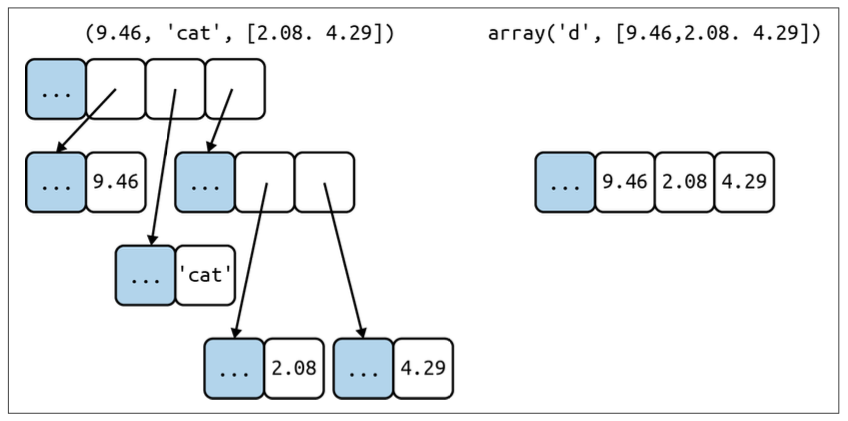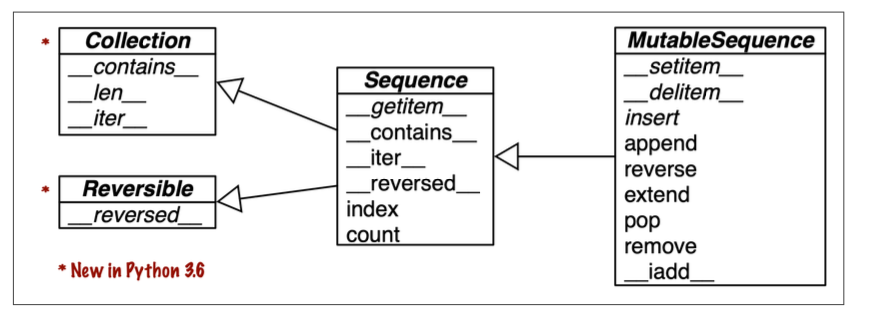- Container vs Flat
- Every Python object has a header with metadata
- Mutable vs Immutable
The Python stand library offers different sequence types implemented in C.
Container vs Flat
 Sequence can be categorized into two types depending on the type of element it holds.
Sequence can be categorized into two types depending on the type of element it holds.
Container sequences hold items of different types. It’s important to note that a container sequence hold references to the object it contains. list, tuple, collections.deque are the examples of container sequences.
On the other hand, a flat sequence stores the value of its contents in its own memory space not as Python objects. Hence, flat sequences take up much less memory space. str, bytes, and array.array are some examples of flat sequence.
Every Python object has a header with metadata
Every Python object in memory has a header with metadata.
For example, a float has a value field and two metadata fields.
ob_refcnt: obj’s reference countob_type: a pointer to the obj’s typeob_fval: a C double holding the float value
Each of the above fields takes 8 bytes and this is why a tuple of floats takes up more memory space than an array of floats. A tuple of 5 float objects has a tuple object itself plus the five float objects while an array of 5 floats has only a single array object and raw float values.
Mutable vs Immutable
Mutable sequences are the ones whose state can be changed after initialization. Examples of mutable sequences include list, bytearray, array.array, collections.deque.
Immutable sequences’ state cannot be changed once they have been initialized. Some examples are tuple, str, bytes.
 (arrows pointing from subclass to superclass)
(arrows pointing from subclass to superclass)
Mutable sequences inherit all methods from immutable sequences with additional methods.
The built-in “concrete” sequence types do not actually inherit(subclass) the Sequence and MutableSequence abstract base classes (ABCs) but they’re virtual subclasses registered with those ABCs.
